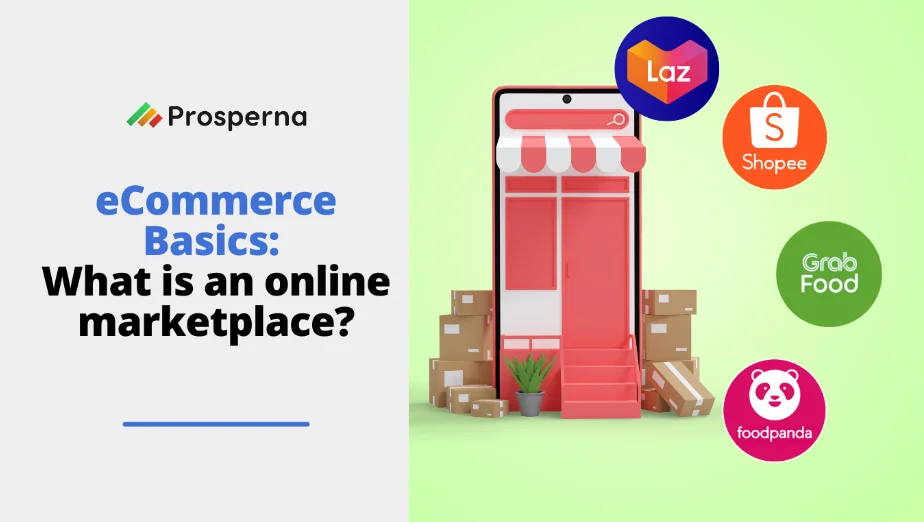Most businesses have the same problem: they have no leads. They use lead generation, but they do not really understand how it works.
Lead generation is all about attracting prospects or customers to your business. Whether you’re a small business owner or working for a large corporation, understanding what lead generation is and how to effectively generate leads is essential for success.
In this blog, we’ll dive into the basics of lead generation and explore various strategies and examples to help you generate more leads and grow your business.
Key Takeaways
- The goal of lead generation is to create a list of leads that can be cultivated and turned into paying clients.
- Businesses can target specific demographics and people who are most likely to be interested in their products and services.
- Lead generation data can offer insightful information on the target market’s buying habits and preferences, helping businesses in making strategic marketing decisions.
What Is Lead Generation?
Lead generation is the process of identifying and cultivating potential customers for a business’s products or services.
It involves capturing information about individuals who may be interested in what your business has to offer and then converting them into paying customers.
This can be done through various methods such as online advertising, content marketing, trade shows, and email campaigns, among others.
The goal of lead generation is to generate a list of leads that can then be nurtured and converted into paying customers, helping your business grow and succeed.
Benefits of Lead Generation
Lead generation allows businesses to target specific demographics and individuals who are most likely to be interested in their products or services. This helps establish better relationships with customers by providing them with relevant information and offers.
It also increases brand awareness and is a cost-effective way for businesses to reach potential customers, leading to a better return on investment.
Lead generation is a practice that businesses use to attract customers and increase their sales by obtaining the contact information of potential leads.
The leads can come from a variety of sources, including top-of-the-funnel leads, mid-funnel leads, and bottom-of-the-funnel leads.
As the lead passes through the funnel, they are provided with more information and engaged in such a way that they are ready to buy at the bottom.
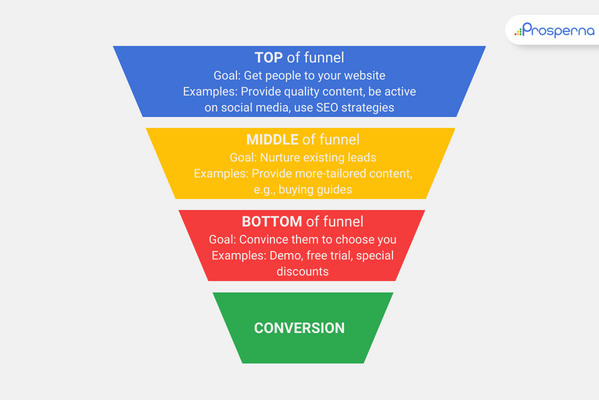
Let me walk you through the lead generation process.
- A visitor learns about your company through one of your marketing platforms, including your website, blog, or social media profile.
- This visitor then clicks on your CTA.
- That CTA directs the visitor to a landing page, a web page created with the purpose of collecting lead information in exchange for an offer, either a free ebook or template.
- In exchange for the offer, your visitor submits a form on the landing page.
The ebook and template function as your lead generation tools because visitors who wish to read them must provide their contact information.
Simply put, it’s a means to assist people while also putting leads into your sales funnel.
Examples of Lead Generation Strategies
Now that you know the process and benefits of lead generation, let’s talk about the seven examples of lead generation strategies you can use to attract potential clients to your funnel.
1. Competitor Analysis
In order to better understand how to generate leads, it is important to first understand the competition.
A competitive analysis is a great way to gain insight into what others are doing in the same space. By understanding what your competitors are doing, you can adapt and improve your own lead generation strategy.
Here are three things to look for when conducting a competitor analysis:
- Your competitor’s lead generation strategy: This includes understanding how they are attracting and converting leads.
- Sales Process: This will provide you with information on how they are making sales and making money.
- Customer base: This will give you insights into who they are targeting and why.
By understanding all of these things, you can adapt and improve your own lead generation strategy. With a little bit of research and analysis, you can figure out what is (and is not) working for your competition and use that to your advantage.
2. Content Marketing
Content marketing is one example of a lead generation strategy that is extremely effective for your business.
By creating high-quality, engaging content and making it available to your target audience, you can attract attention and interest from potential customers who are looking for what you have to offer.
Content marketing can take many different forms, such as blog posts, articles, infographics, ebooks, and more.
The key is to create content that is relevant to your audience and provides value. You can include CTAs anywhere in your content to guide readers to a landing page.
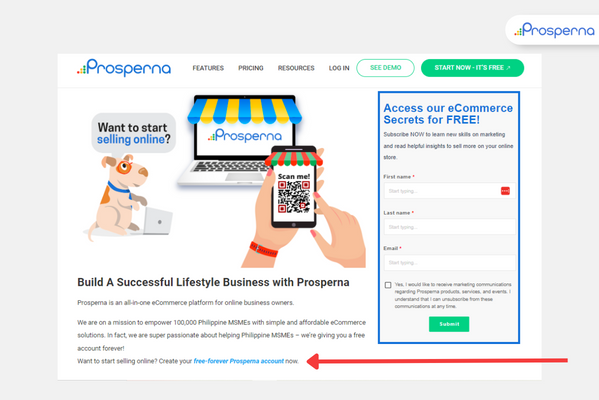
In our blog posts, there is always a CTA, leading to Prosperna’s account registration page, at the end of every article.
If you can do this, you’ll be well on your way to generating leads and growing your business.
3. Paid Advertising
Another example of a lead generation strategy is a paid advertising campaign. You will use targeted keywords to attract potential customers who are actively searching for the products or services that your business offers.
By targeting relevant keywords, your ad will appear in the search results when potential customers are looking for what you have to offer, increasing the chances that they will click on your ad and visit your website.
To further increase the chances of generating leads from your paid advertising campaign, you can use effective call-to-action (CTA) text and visuals.
Your CTA should be clear and concise, and it should encourage potential customers to take the next step in the buying process. For example, you could use a CTA that says “Learn More” or “Get a Free Quote.”
By using targeted keywords and effective CTAs, you can create a lead-generation paid advertising campaign that will help you reach your target market and generate more leads.
4. Social Media Marketing
Social media marketing can be an extremely effective way to generate leads for your business.
For example, if you offer a free demo on your website, you can use social media to drive traffic to your landing page and capture leads. To do this, you would create a post on social media promoting your free demo and include a link to your landing page.
Make sure your landing page is optimized for lead capture with a clear call-to-action and a form for visitors to fill out.
The swipe-up feature on Instagram stories, Facebook bio links, and bitly URLs on Twitter are just a few of the social media sites that make it simple to direct your followers to take action.
5. Referral Programs
A referral program is one example of how a company can generate leads.
In a referral program, customers or clients are given the incentive to refer new customers to the company. The incentive can be in the form of a discount, a free product, or simply a thank you.
Referral programs are a great way to generate word-of-mouth marketing and can be an effective way to grow your business.
6. Email Marketing
Email is an excellent way to connect with customers who are already familiar with your company, brand, and offerings.
For example, you could create a targeted email campaign that includes a call-to-action that encourages the recipient to learn more about your product or service. This CTA could be a link to a blog article or a landing page where they can sign up to register for an account.
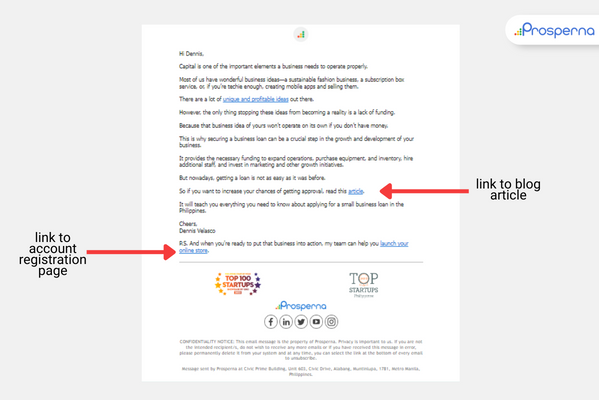
Since they have already joined your mailing list, asking them to take action is much simpler.
A targeted and effective email marketing campaign is one good example of a lead generation strategy.
7. Webinars
Webinars can be an extremely effective tool for lead generation. According to HubSpot’s State of Marketing Report 2022, 53% of marketers say webinars are the top-of-the-funnel format that produces the most high-quality leads.
By hosting a webinar, you can create an engaging and informative event that will attract potential customers and help you generate leads.
To make your webinar as effective as possible, it is important to promote it effectively and ensure that the content is of high quality. You should also consider offering incentives to encourage people to sign up, such as discounts or freebies.
Prosperna offers training webinars to help business owners embrace digitalization and learn how to use our eCommerce platform.
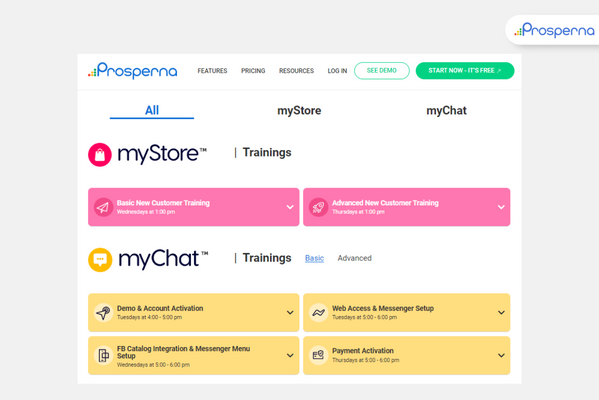
FAQs
What are the types of lead generation?
The lead generation typically falls into two main categories: Outbound lead generation, where the sales team reaches out to the leads that employ outbound tactics such as cold calling, pay-per-click, cold email outreach, etc. Inbound lead generation occurs when visitors control how, when, and whether they engage with your content and provide their contact information.
What is an example of lead generation in digital marketing?
Digital marketing lead generation mediums are online channels such as websites, blogs, social media, email, etc.
Final Thoughts
Your business can generate more leads, ensure a steady stream of new customers, and expand if you learn the basics of lead generation and put effective techniques, including content marketing and email campaigns, into practice. So, if you want to take your business to the next level, consider implementing the examples of lead generation strategies discussed above and watch your business thrive.
Prosperna, Your Partner to eCommerce Success
Prosperna is an all-in-one eCommerce platform for Philippine businesses. We are on a mission to empower 100,000 Philippine MSMEs with simple and affordable eCommerce solutions.
In fact, we are super passionate about helping Philippine MSMEs we’re giving you a free account forever!
Want to generate more leads? Create your free-forever Prosperna account now.


